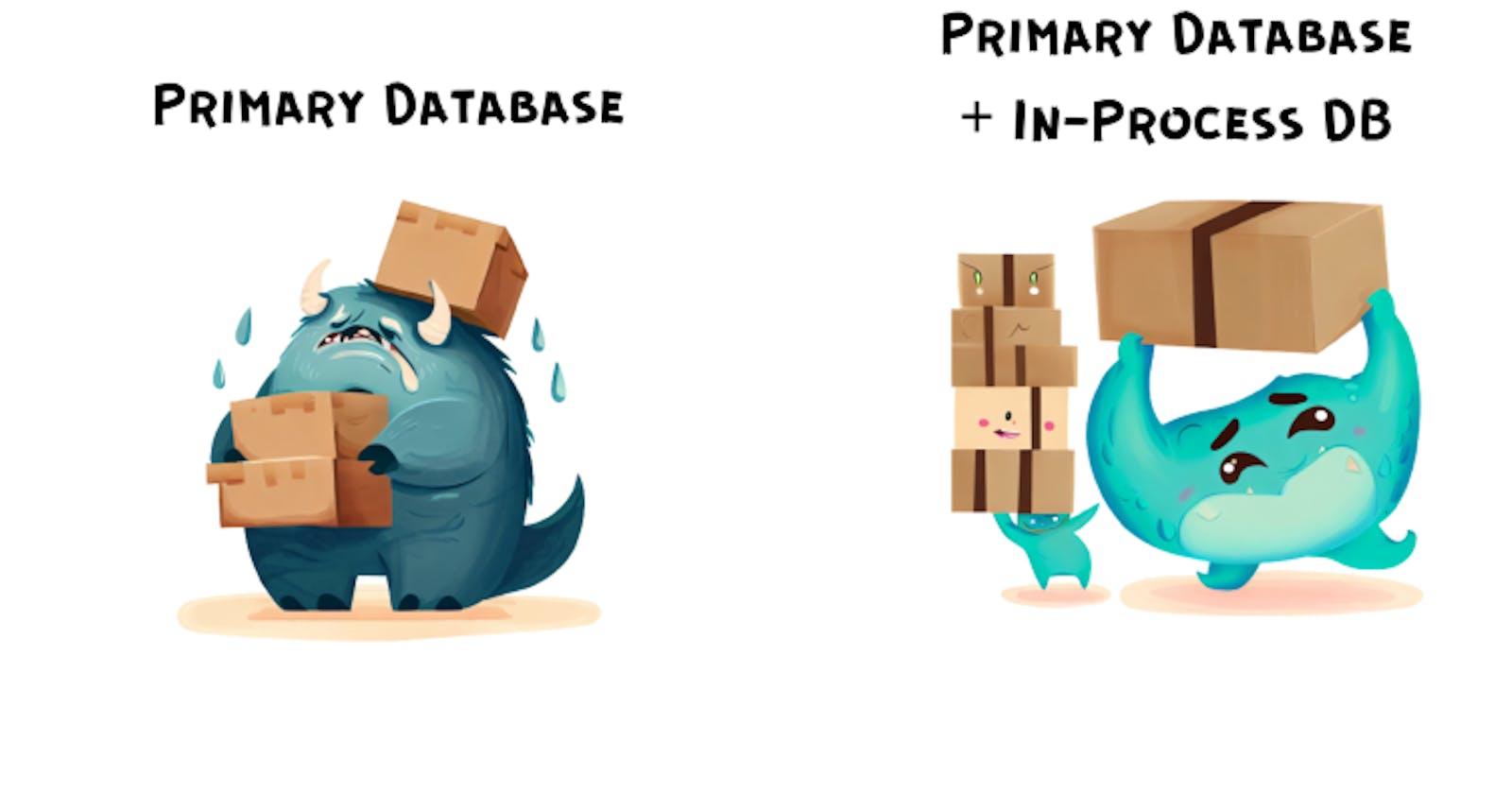The Secret Weapon to Improving Your Application's Performance: In-Process Databases 🎯
In today’s fast-paced digital landscape, performance is key to the success of any application. 🏎️ As a developer, you may have experienced the pain of slow database queries that drag down the entire application’s performance. 😩 This is where in-process databases come into play — they can help save your database from overloading and drastically improve its condition. 💪 In this article, we’ll dive into the world of in-process databases, their advantages, and use cases. 🤓
In-process databases are designed to be lightweight and efficient, with minimal overhead and fast access times. 🚀 They run within the same process as the application, making them highly efficient and fast. In-process databases are generally optimized for high performance and fast access times. By using in-process databases, companies can store frequently accessed or transient data within the application process, rather than making frequent requests to the main database. This can help improve the performance of the application and reduce the load on the primary database. 💻
🔍 Use Cases for In-Process Databases:
Logging: In-process databases can be used to buffer data before it’s written to the primary database. This can be particularly useful for logging data that doesn’t require immediate persistence. 📝
Batch Processing: In-process databases can be used for batch processing of data, where data is inserted in bulk and processed in batches, thus reducing the load on the primary database. 📊
Distributed Transactions: In-process databases can be used in distributed transactions to reduce the overhead of inter-process communication and improve performance. 🤝
🔥 Advantages of In-Process Databases:
Reduced Latency: In-process databases are stored in the same process as the application, eliminating the need for inter-process communication and reducing latency. This can be particularly beneficial for high-performance applications that require fast data access times. 🚀
Reduced Overhead: Since in-process databases are stored in memory, they can reduce overhead by eliminating the need for disk I/O operations. 📉
Improved Scalability: In-process databases can improve scalability by reducing the load on the primary database, allowing it to focus on critical operations. 📈
If you wanna know more about How we reduced TrulyMadly’s legacy custom-managed MySQL database disk size with zero downtime after separating databases.
Sure, here are some things to keep in mind while using an in-process database:
Capacity: In-process databases are designed to handle small to medium-sized datasets, so it’s important to keep their capacity limitations in mind. They are not a replacement for traditional databases, but rather a complement to them. 💾
Persistence: In-process databases are typically used for storing transient or frequently accessed data, but they can also be used to store persistent data. However, in this case, it’s important to ensure the data is backed up regularly, as in-process databases are not as fault-tolerant as traditional ones. 💻
Security: In-process databases run within the same process as the application, so it’s important to ensure that the data is properly secured. This may include encrypting the data or implementing access controls to prevent unauthorized access. 🔒
Consistency: In-process databases may not always provide the same level of consistency guarantees as traditional databases. It’s important to understand the consistency guarantees provided by the in-process database you are using and ensure that your application can handle any inconsistencies that may arise. 🤝
🌟 Popular In-Process Databases:
SQLite: SQLite is a popular in-process database that is widely used in applications of all sizes. It’s fast, lightweight, and requires minimal configuration. 🚀
LokiJS: LokiJS is a JavaScript in-process database that is ideal for browser-based applications. It’s fast, scalable, and easy to use. 💻
RocksDB: RocksDB is a high-performance in-process database that is designed for scale. It’s used by large-scale applications such as Airbnb and Netflix. 🪨
In conclusion, in-process databases can be an excellent way to improve the performance and scalability of your applications. They offer a range of advantages over traditional databases, including reduced latency, reduced overhead, and improved scalability. By using in-process databases in the right way, you can help ensure that your applications run smoothly and efficiently, even under high loads.
Sources:
🔍 “In-process database management systems” by Microsoft Research: https://www.microsoft.com/en-us/research/publication/in-process-database-management-systems/
🔍 “Advantages of Using In-Memory Databases” by Database Trends and Applications: https://www.dbta.com/Editorial/Trends-and-Applications/Advantages-of-Using-In-Memory-Databases-145204.aspx
🔍 SQLite: https://www.sqlite.org/
🔍 LokiJS: https://github.com/techfort/LokiJS
🔍 RocksDB: https://rocksdb.org/
Cheers! 🥂
